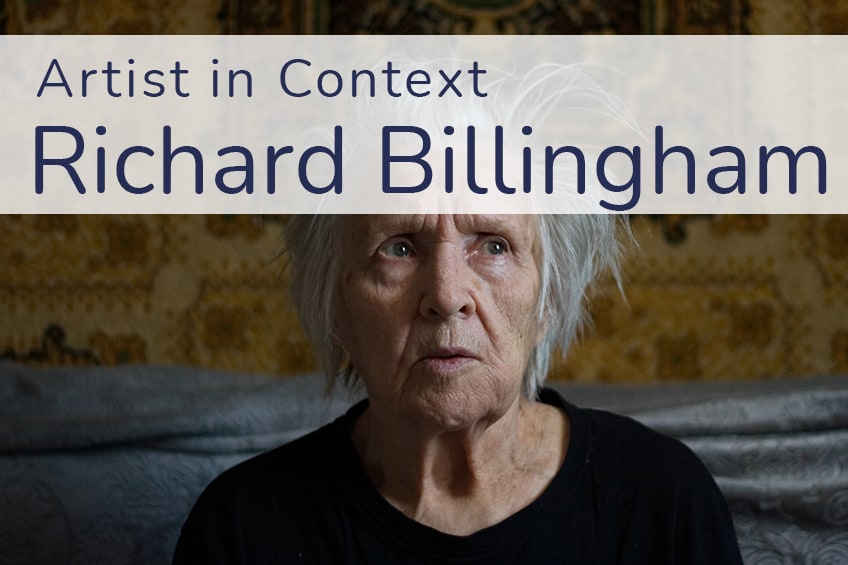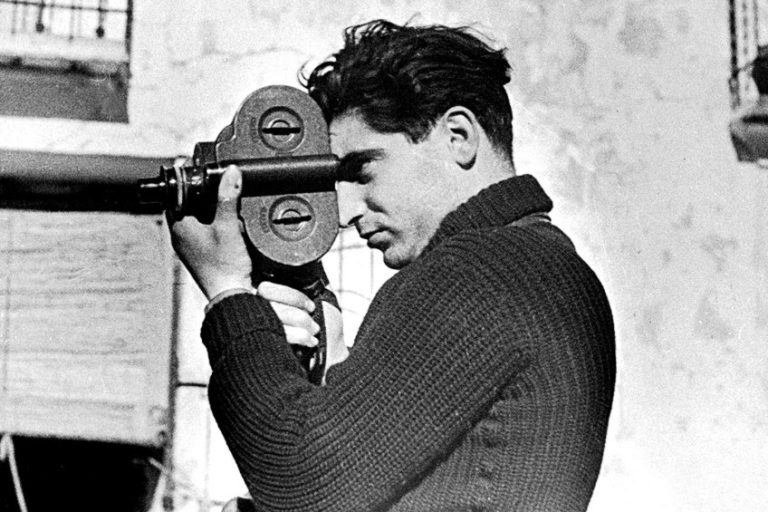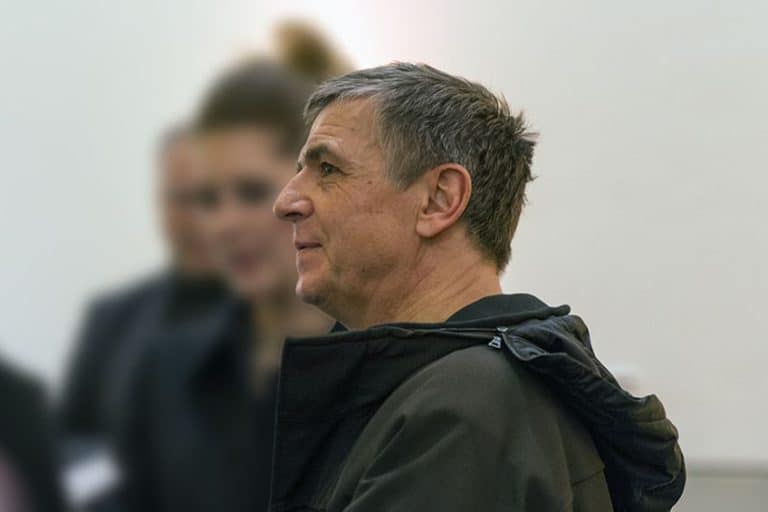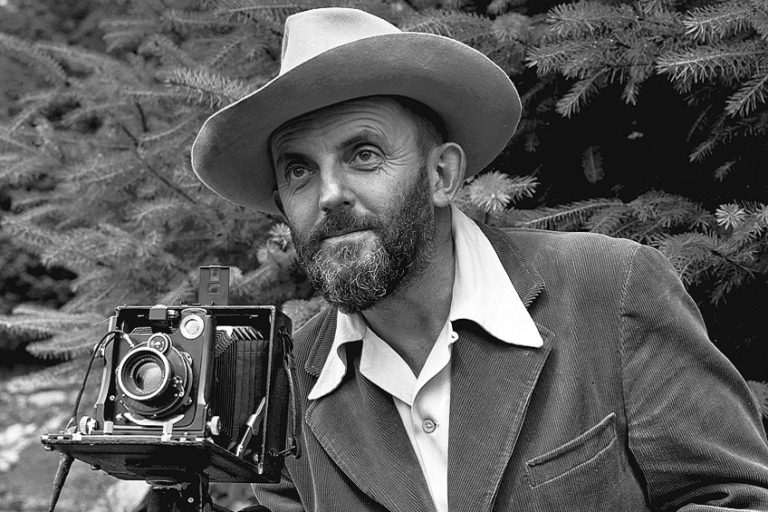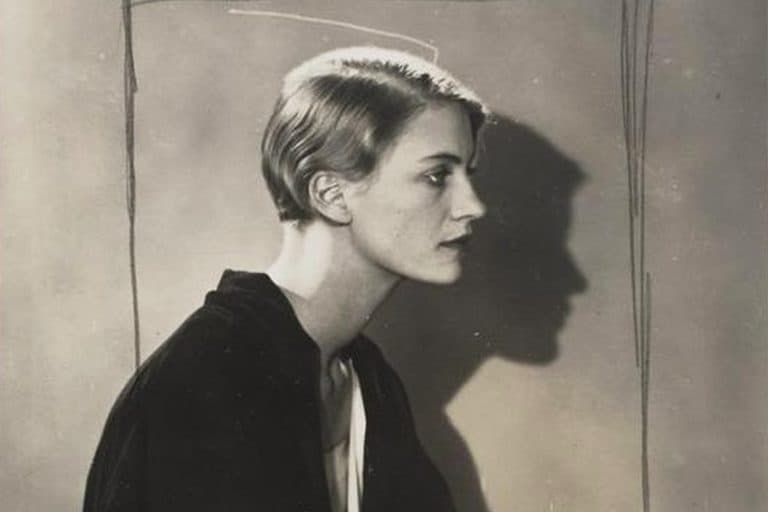Richard Billingham – Explore Richard Billingham’s Photography
Richard Billingham is an artist, photographer, videographer, and art professor from the United Kingdom. Richard Billingham’s photography focused on his family and the West Midlands area where he grew up and landscapes from other regions. After being ‘spotted’ as an art undergraduate at Sunderland University, he quickly rose to become one of the few iconic figures in British photography and was acknowledged as a significant artist both nationally and globally.
Richard Billingham’s Biography
| Nationality | English |
| Date of Birth | 25 September 1970 |
| Date of Death | N/A |
| Place of Birth | Birmingham, U.K |
Richard Billingham is known primarily for Ray’s a Laugh (1996), his photobook that chronicles the lives of his father Ray, an alcoholic, as well as his over-weight, mother Liz, who sports numerous tattoos. He rose to notoriety as a result of his candid photographs of his family, which were subsequently expanded and published as a famous book. He picked the least expensive film and processing he could find.
Childhood
Richard Billingham didn’t learn to read until he was about seven or eight years old. His parents didn’t bother encouraging him, not because he was stupid. When he finally learned, he wanted to read everything, and a whole new world opened up for him. He would go to the library and peruse art books. He likely read the majority of them – there weren’t many, but he learned about Pablo Picasso. John Constable was the painter who had the biggest effect on him.
Billingham was a naturalist, and his factual approach to landscape painting has always piqued his attention.
He has been fascinated by nature since he was 11 years old. He lived in a high-rise and saw nature as an escape. He desired to create landscapes at the time, but it was difficult. There was a time when his father and he were the only ones living in a tower block flat. Due to his father’s persistent drinking, his mother had moved into a nearby tower block.
Every day, his father would be in his bedroom, laying on the mattress or perched on the side of the bed, consuming alcohol and staring in the mirror. He decided that he wanted to depict this awful scenario and the way his father seemed in his bedroom. Whenever he painted, he worked swiftly — each picture took around 15 to 20 minutes at a time. He tried to teach himself to take more time with a painting, but his father couldn’t remain still for long enough — he needed a drink or had to go to the bathroom.
Later on, he was able to obtain a Zenith camera.
He reasoned that the images may be used as source material for the paintings. The photos portrayed him motionless, allowing him to paint from them more slowly. When he returned to the flat after leaving to attend university in the north, he discovered that his father had moved out. He was residing in a new flat with his mother in another adjacent tower block because the unit was unoccupied. The flat was not decorated in the same manner as the one where he grew up. It was more sumptuous, with more cats, dogs, and little creatures in cages all throughout the place – it was a riot.
Education and Early Work
Michael Collins and Julian Germaine saw some of the photos while Billingham was studying art at Sunderland. Billingham didn’t believe they were as exceptional when they first started interested in them. He assumed it was merely out of curiosity that they were intrigued by them. The Telegraph editor arrived at his Sunderland student lodgings and said, “I need to see more of these images,” so he handed him a tote bag full of them and sent him home.
He had no idea that this would lead to them being displayed in galleries. It was still planned to create paintings from them. He was also interested in photographing some of them simply for the purpose of photographing them since he loved doing it and seeing how they turned out.
He considers them to be unintentional art in the sense that he created them for reasons other than displaying them in exhibitions, as they were merely meant to be references for actual works.
Richard Billingham’s Photobooks
Richard Billingham had the chance to publish approximately 50 of them in a book, but he was hesitant to do so because he didn’t want to be labeled a photographer – he didn’t want to be pigeonholed. He aspired to be a painter. He spoke with a Sunderland acquaintance who advised him, “You should just do the book.” Francis Bacon was a furnishing designer before he became an artist, and if you look at the book of images, photography is far nearer to painting than home furnishings is.
So, it was the deciding factor, although he was hesitant at first.
The Creation of Ray’s a Laugh (1996)
Richard Billingham got his structural notions from painting before looking at modern photography, but after looking at the works of other photographers, he got inspiration and visual concepts from them as well – whether intentionally or unconsciously. From 1994 onwards, Billingham started to be affected by other photographers’ work, and he came to see himself as a viable photographer. Further edits were made to the book incorporating more photos that were taken after he had started to be influenced by other photographers, but these pictures were never meant to be more than reference works for paintings either.
To him, there is a clear distinction. Even though they’re certainly more difficult for the viewer, he favored the more innocent ones he did before seeing the picture books. However, he continued to reject a polished look in the following works.
He believed that the technical errors he had made may lead to new painting ideas, and he intended to keep doing so. Many of those “accidents” were allowed to occur: they appear to be mishaps, but they aren’t.
He was attempting to achieve a snapshot aesthetic. He was intentionally messing up in order to create a better or more unique image. He didn’t care about the mishaps or how they were seen at the time since he believed they would produce greater works and he still intended to be a painter. When the images were discovered to be fascinating, they were combined to form Ray’s a Laugh, a book that appears to focus on his father’s drinking. His father is the primary character, although the story isn’t entirely about his addiction or his inebriation.
Billingham did wish to capture the horror of the event through photos. He wanted them to be really touching on an emotional level. He believes he focused on the repercussions of the drinking rather than the drinking itself. He didn’t want to depict or produce a documentary on drinking. He chose 70 to 100 of his favorites, and they edited around 50 of them in the end. He consented to the changes at the time. If he were to redo it now, he would leave out a few. The image of the TV supper, for example, appears to be one that any amateur photographer might have snapped in the flat.
An image like that has the potential to undermine everything else. However, there is just a handful that he would remove or substitute for others.
The Creation of Black Country (2004)
After Ray’s a Laugh, he realized he needed to create another piece of art in order to further his profession. He created a series of urban landscapes in 1997 that was eventually published. He still desired to take photographs, but with a different theme – he desired photos that were as excellent as the previous ones, but without the exciting subject matter. He wanted to test if he could take pictures without using any exciting subjects. He needed a simple subject, so he photographed the neighborhood where he was born and raised. He was interested in photographing the area.
He didn’t want any photographs to be a portrait, a picture of the sky, an automobile, or a structure since that would focus on the person. He simply wanted to focus on the empty areas.
This project then transitions from his earlier snapshot technique to medium format with more finished photographs. He didn’t want to spend the rest of his life taking harmless snapshot shots. He wanted to learn how to take a shot that required thinking. He was and still is, too indolent to paint at the time.
He is no longer willing to work on a single painting for weeks at a time when he can create an image in a fraction of a second. He reasoned that learning how to do this other form of photography would take less time. Furthermore, with so many various sorts of photographs to choose from, why restrict oneself to just one? Some photographers seem to specialize in one form of photography, but he becomes tired of it.
The Creation of Zoo (2007)
Richard Billingham created three unique sets of images for the Zoo project: a sequence of video works, medium format studies, and a collection of photographs based on his mother’s zoo animal images. After his mother died, he was left with the task of cleaning up the vacant flat. The family albums were one of the few items he retained.
The way she had interspersed photographs of zoo animals amid family portraits was very striking. Her zoo photographs have a playful quality to them. They were generally shot on 110 and 126 film, so they’re a little fuzzy.
They were taken naively as if she didn’t realize the ridiculousness of the confined animals’ situation. Billingham had been taking these thoughtful, medium format images at zoos and felt it would be a wonderful counterpoint. He decided to create a collection of animal paintings based on them. It’s a different way of observing zoo animals, and it’s the way that many members of the public are required to observe them. More diversity was needed in the project, and this was another way to depict confined animals.
He always stood where a spectator would, never going behind the scenes, since he wanted to see everything through the eyes of the audience. They include elements of the spectator as well as his aesthetic.
This work appears to harken back to family work in some ways – not simply in terms of technique, but also in terms of thought – the notion of someone stuck in a position. He wanted them to appear as if they were being confined. He didn’t consider the zoo’s connection to his family’s job, although it exists.
He was copying the appearance and feel of his mother’s images with the zoo snaps. Hers is more innocent, and his composition is superior, yet they both have the same aesthetic. In Ray’s a Laugh, he purposefully utilized disposable cameras and low-cost cameras, and he did the same with the Zoo photos.
Richard Billingham’s Photography
Above, we have looked at examples of Richard Billingham’s photography books. Now we will look at a few specific examples of Richard Billingham’s photography. These photos highlight the tone and subject matter of his works.
Untitled (NRAL 2) (1994)
| Year Taken | 1994 |
| Medium | Fuji long-life color print on aluminum |
| Dimensions | 105 cm x 158 cm |
| Location | Saatchi Gallery |
This photo is of Richard Billingham’s mother. She can be seen reclining on a sofa, wearing a floral dress, and fluffy gray slippers. Most of Richard Billingham’s photography features his mother and father. His mother, Liz, never drank but was known to smoke many cigarettes.
In this picture, however, she appears to be relaxing.
Untitled (NRAL 13) (1996)
| Year Taken | 1996 |
| Medium | Fuji long-life color print on aluminum |
| Dimensions | 105 cm x 158 cm |
| Location | Saatchi Gallery |
He believed he required some form of reference material for his paintings because getting individuals to pose for you might be tough. At the time, he was still living with his father. Ray was virtually always in his room, drinking and sleeping. He became unwell whenever he walked outside. To fall asleep, he drank.
He had a friend from a nearby tower block, who was also an alcoholic, who came by to make him some powerful home-brew. Ray didn’t have to go outside to the off-license because this was far cheaper than “purchasing” booze.
For convenience, he kept the home-brew bucket by his bedside and sipped from a plastic jug that he would pour into. It tasted as horrible as it looked, but it must have fed him in some way because he didn’t eat otherwise. Liz didn’t live with them at the time because of Roy’s constant drinking and whining. She just came over once in a while.
Untitled (NRAL 17) (1994)
| Year Taken | 1994 |
| Medium | Fuji long-life color print on aluminum |
| Dimensions | 105 cm x 158 cm |
| Location | Saatchi Gallery |
Another instance of a photographer catching a private moment. When he printed those photos, he was hesitant to tell anybody who they belonged to for fear of alienating the other pupils, who all came from far more financially and spiritually comfortable families.
He was an introvert as a teenager since he had always been self-conscious about his family’s situation.
After a few months at college, he realized that by telling students and, especially, instructors who the paintings and images were true of, he could come clean about his family background and, as a result, easily relate to others.
Recommended Reading
Exploring a new artist’s work is always rewarding. Today, we’ve delved into the life and art of Richard Billingham. If you’re eager to uncover more about Billingham’s photography and biography, this recommended read offers invaluable insights.
Step into the raw and captivating world of family dynamics, poverty, and resilience with Ray’s a Laugh (2024) by Richard Billingham. This poignant photobook offers an unfiltered glimpse into Billingham’s tumultuous upbringing, marked by alcoholism and economic hardship. Through starkly intimate images, Billingham paints a vivid portrait of survival amidst chaos, inviting readers to confront the complexities of human experience. With unseen photographs and a fresh perspective, this edition unveils Billingham’s original vision, ensuring that his powerful narrative resonates with a new generation.
- Intimate images of Billingham’s chaotic parental home.
- Presents Billingham's original vision with previously unseen images.
- Offers a direct insight into Billingham's deeply personal work.
When Richard Billingham focused his eyes on his family and their circumstances in the core of working-class existence in Thatcher’s Britain, he didn’t give a damn about how they should seem. When he lived with his father Ray, he was unconcerned with photography. He was just a budding artist in search of a patient subject.
Frequently Asked Questions
Who Is Richard Billingham?
Richard Billingham is a British artist, photographer, filmmaker, and professor of art. Richard Billingham’s photography was mostly centered on his family and the West Midlands area where he grew up and landscapes from other parts of the country. He swiftly climbed to become one of the few iconic names in British photography and was recognized as a notable artist both nationally and worldwide after being spotted as an art undergraduate at Sunderland University.
What Is Richard Billingham’s Photography About?
Billingham’s photos are candid, personal, and often excruciatingly funny. His honest images of his family propelled him to fame, and they were later extended and published in a well-known book. He chose the cheapest film and processing that he could find.
Jordan Anthony is a film photographer, curator, and arts writer based in Cape Town, South Africa. Anthony schooled in Durban and graduated from the University of the Witwatersrand, Johannesburg, with a Bachelor of Art in Fine Arts. During her studies, she explored additional electives in archaeology and psychology, while focusing on themes such as healing, identity, dreams, and intuitive creation in her Contemporary art practice. She has since worked and collaborated with various professionals in the local art industry, including the KZNSA Gallery in Durban (with Strauss & Co.), Turbine Art Fair (via overheard in the gallery), and the Wits Art Museum.
Anthony’s interests include subjects and themes related to philosophy, memory, and esotericism. Her personal photography archive traces her exploration of film through abstract manipulations of color, portraiture, candid photography, and urban landscapes. Her favorite art movements include Surrealism and Fluxus, as well as art produced by ancient civilizations. Anthony’s earliest encounters with art began in childhood with a book on Salvador Dalí and imagery from old recipe books, medical books, and religious literature. She also enjoys the allure of found objects, brown noise, and constellations.
Learn more about Jordan Anthony and the Art in Context Team.
Cite this Article
Jordan, Anthony, “Richard Billingham – Explore Richard Billingham’s Photography.” Art in Context. June 15, 2022. URL: https://artincontext.org/richard-billingham/
Anthony, J. (2022, 15 June). Richard Billingham – Explore Richard Billingham’s Photography. Art in Context. https://artincontext.org/richard-billingham/
Anthony, Jordan. “Richard Billingham – Explore Richard Billingham’s Photography.” Art in Context, June 15, 2022. https://artincontext.org/richard-billingham/.


